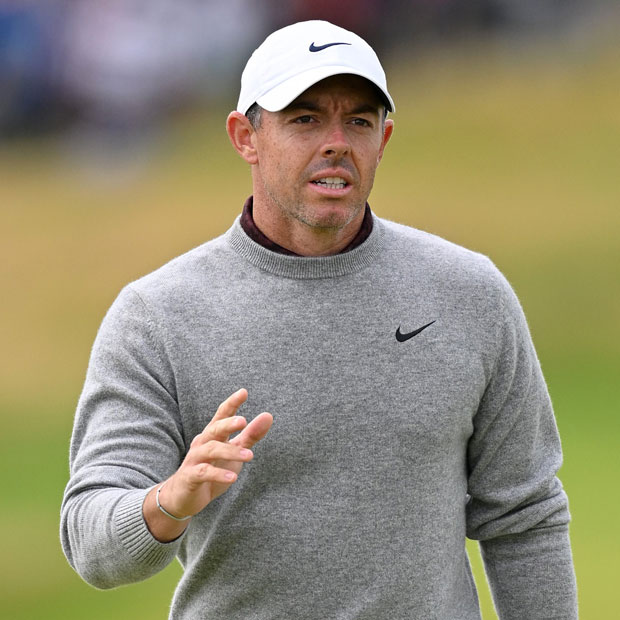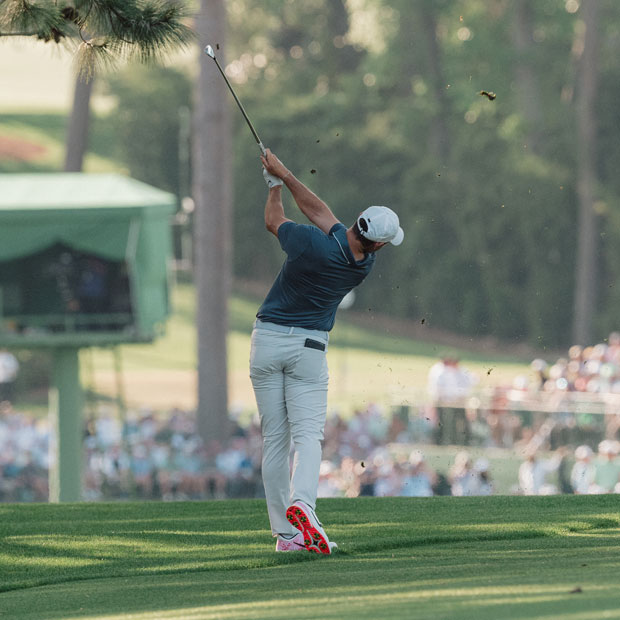JT and Rory vs. the USGA
The real numbers behind equipment R&D and the Distance Insights Project


Earlier this month, after the USGA and R&A provided an update on its study of hitting distance in golf, Justin Thomas and Rory McIlory were quick to criticize the entire Distance Insights Project. Thomas and McIlroy are among the most prominent figures in men’s professional golf, so their comments gained significant traction in the media. Both based their critiques partly on claims about the finances of the companies and organizations involved. An analysis of financial documents, however, suggests that the players’ opinions were not particularly well informed.
Let’s start with one of Justin Thomas’s main concerns: that it’s unfair to set new equipment standards after the OEMs (Original Equipment Manufacturers) have spent so much on research and development. “Companies have put billions of dollars, I would say—I mean, I don’t know that, so I’ll say millions of dollars into the construction of golf balls and equipment,” Thomas said. “To be perfectly honest, I think it would be extremely selfish of the USGA and the R&A to do that because of all the hard work that [the manufacturers] have put into making their equipment and golf balls as great as they possibly can.”
After hearing Thomas’s comments, a Fried Egg reader who is a Certified Public Accountant pointed us toward publicly available financials for equipment manufacturers Titleist and Callaway. Particularly relevant were the figures related to research and development.
From 2017 to 2019, Acushnet, Titleist’s holding company, spent between $47 and $52 million on R&D. That amounted to about 3% of the company’s net sales. Over the same period, Callaway spent between $36 and $51 million, between 3 and 4% of its net sales. These expenses cannot be attributed solely to golf ball and club development, as both companies manufacture clothing, shoes, and other kinds of products. However, for both Acushnet and Callaway, golf equipment is a major priority, so it’s safe to assume that their R&D spends would be largely allocated to balls and clubs. (Callaway does note that a significant portion of its R&D increase between 2018 and 2019 was due to its acquisition of Jack Wolfskin, an outdoor apparel company.)
See for yourself:
Acushnet 2019 Annual Financial Report
The key is this: U.S. companies can take a tax credit for a portion of their R&D spending from their taxable income. This is a complex calculation and we do not have full details on how golf OEMs perform it, but the documents reveal that Callaway has carried forward $18.8 million in federal R&D tax credits, which will expire in the 2030s. These tax credits account for about 3.5% of Callaway’s 2019 taxable income and 4.4% of its 2018 taxable income.

Page F-37 of Callaway's 2019 10-K, which shows the impact of federal tax credits on the company's statutory tax rate
Similarly, Acushnet is carrying forward an $8.2 million state research credit, which will expire in 2030.

Page F-34 of Acushnet's 2019 10-K, which shows $8.2 million in state research tax credits
What all of this means in layman’s terms is that R&D helps reduce Acushnet’s and Callaway’s effective tax rates. So yes, the OEMs are spending tens of millions figuring out how to produce better golf balls and clubs. But the tax benefits they receive for doing so make a large investment in R&D a financially savvy move in the long run.
Contrary to what Justin Thomas implies, golf OEMs have not devoted themselves to R&D solely for the good of their product and the game. Rather, these companies have been, at least in part, responding to government incentives, and they will no doubt continue to do so if the USGA and R&A establish new restrictions.
◊
Rory McIlroy focused his critique not on the finances of the OEMs but on those of the USGA. “Honestly, I think this [Distance Insights Report] has been a huge waste of time and money,” he said at TPC Scottsdale, “because that money that it’s cost to do this report could have been way better distributed to getting people into the game, introducing young kids to the game, introducing minorities to the game. This is so small and inconsequential compared to the other things happening in the game. It’s the grassroots. It’s getting more people engaged in golf. That’s where they should be spending their money, not spending it on the [Distance Insights Report].”
These comments, like Thomas’s, do not fare well under scrutiny. According to Janeen Driscoll, Director of Brand Communications for the USGA, the USGA’s spending on Distance Insights was relatively minor.
“The USGA invested $1 million total in Distance Insights from 2017 to 2020—the majority of which was dedicated to third-party research,” Driscoll told The Fried Egg in an email. “A lot of this research was dedicated to better understanding and quantifying the recreational game, as we had more than enough data from professional tours and golf at the elite competitive level.”
Driscoll went on to compare that multi-year $1 million investment to the USGA’s spending on other initiatives. In 2020 alone, the organization dedicated $1.3 million to junior programs, $1.9 million to turfgrass research grants, more than $1 million to the PJ Boatwright Internship program, and another $3 million to golf history research and preservation. The USGA also typically sets aside about $10 million per year to conduct amateur championships around the country.
Finally, the USGA spends a significant amount annually on helping golf facilities limit their expenses. “Through the USGA Green Section, [the USGA] invests approximately $10 million every year towards sustainability, to reduce the operating costs of golf courses,” Driscoll noted. “That $10 million annual investment has been proven to yield $1.84 billion in savings to the golf community every year.”
Furthermore, part of the intention of the Distance Insights Project is to explore ways that courses might keep their footprints smaller and avoid unnecessary renovation expenses in the future. Lower budgets for courses could mean lower green fees for golfers.
It is perfectly reasonable for Rory McIlroy to want the USGA to prioritize “getting more people engaged in golf.” But the publicly available financial evidence indicates that the Distance Insights Project did not divert the organization from that mission.
◊
Justin Thomas and Rory McIlroy’s statements about OEM and USGA spending garnered a lot of attention as well as approval—or at least very little pushback—from fellow players. Checked against financial records, however, their comments appear less persuasive.
For OEMs, a major investment in R&D will continue to be a no-brainer even if new distance restrictions are implemented. The companies’ past work will by no means go to waste; it has earned them billions and set them up for a robust future. As for the USGA, it has not spent extravagantly on the Distance Insights Report. The organization allotted a small percentage of its budget to the study while maintaining a nearly $50 million annual investment in efforts to “grow the game.”
Of course, the USGA and R&A are not without fault here. The various announcements associated with the Distance Insights Project have not gone very smoothly. It seems that the governing bodies would benefit from better communication with professional golfers, equipment manufacturers, and traditional media outlets. When that communication fails, the USGA and R&A should be prepared to defend their position more cogently than they have so far.
Perhaps the governing bodies’ biggest blunder was waiting until the past few years to take ambitious action on hitting distances in golf. But that’s a discussion for another time.
Professional golfers, like amateurs, are entitled to their opinions on the Distance Insights Project. However, the top PGA Tour players have an outsize microphone and therefore an outsize responsibility to be well informed. It would be helpful for the entire golf world if they based their statements about the distance issue on facts rather than misconceptions.
Leave a comment or start a discussion
Engage in our content with thousands of other Fried Egg Golf Club Members
Engage in our content with thousands of other Fried Egg Golf Members
Get full access to exclusive benefits from Fried Egg Golf
- Member-only content
- Community discussions forums
- Member-only experiences and early access to events











Leave a comment or start a discussion
Lorem ipsum dolor sit amet, consectetur adipiscing elit. Suspendisse varius enim in eros elementum tristique. Duis cursus, mi quis viverra ornare, eros dolor interdum nulla, ut commodo diam libero vitae erat. Aenean faucibus nibh et justo cursus id rutrum lorem imperdiet. Nunc ut sem vitae risus tristique posuere. uis cursus, mi quis viverra ornare, eros dolor interdum nulla, ut commodo diam libero vitae erat. Aenean faucibus nibh et justo cursus id rutrum lorem imperdiet. Nunc ut sem vitae risus tristique posuere.